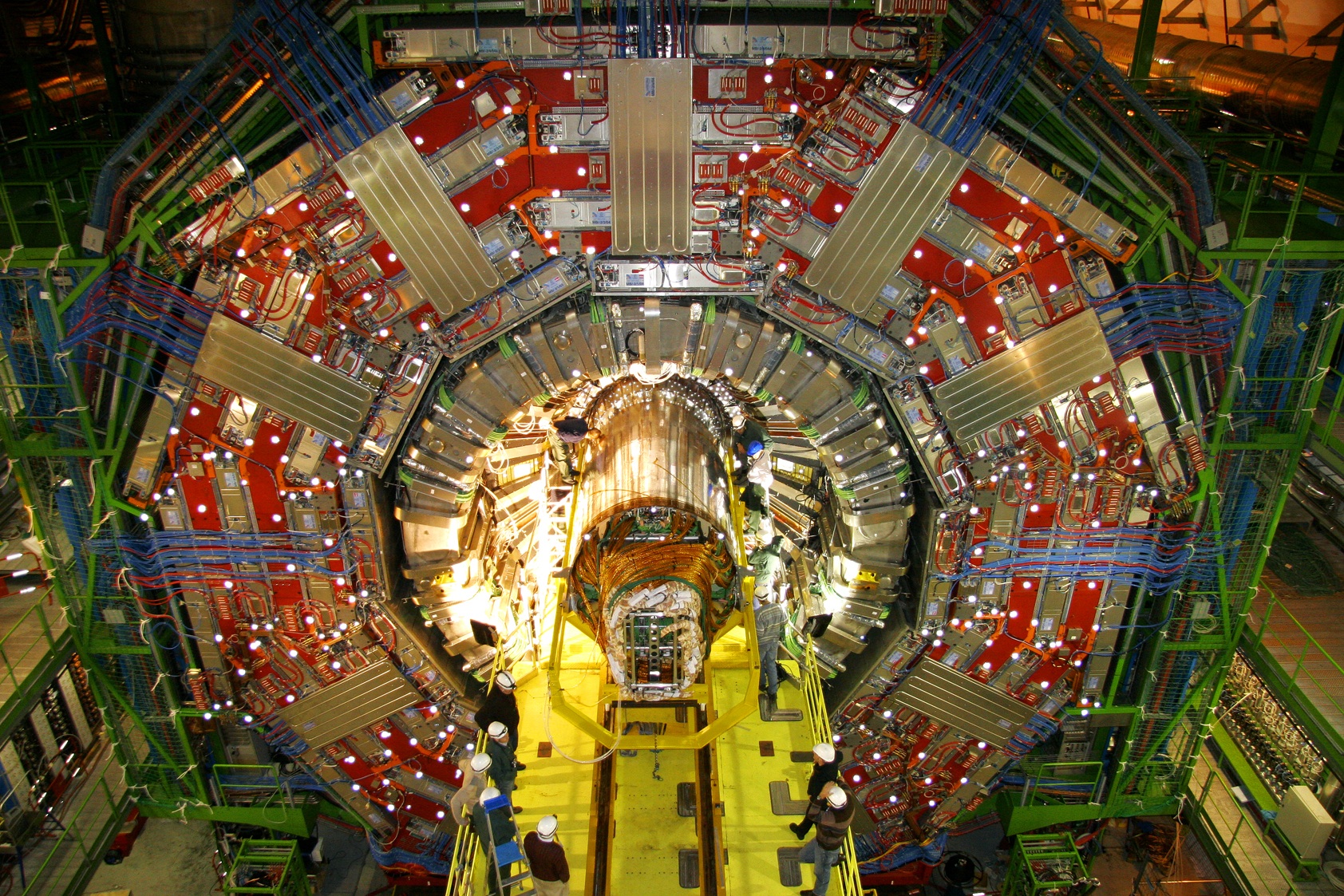Proton–Proton Collisions at the LHC

For almost two decades now, the main research activity of the Dissertori group has focused on the construction, commissioning and operation of the CMS experiment at CERN’s LHC, with particular emphasis on the electromagnetic crystal calorimeter (ECAL). The group has been the main responsible for the design, development and implementation of the ECAL detector control system, which monitors a large number of operational and environmental parameters and comprises a safety system. The successful construction and commissioning of this system has been followed by a smooth operation since the LHC startup. In parallel to the ongoing data analysis activities, work has started towards the phase-2 upgrades of the CMS experiment, with focus on the front-end electronics upgrade of the ECAL barrel part and the powering system of the new barrel precision timing layer.
Since the start of CMS data taking in late 2009, the Dissertori group, in collaboration with the groups of Ch. Grab, F. Pauss and R. Wallny, has played a leading role in the CMS physics analysis activities, in terms of analysis tools development, measurements of Standard Model processes, searches for supersymmetric (SUSY) particles, searches for the Higgs boson and more recently detailed studies of the latter. Concerning software reconstruction and analysis tools, the group has mostly contributed to the development and commissioning of jet and missing transverse energy (MET) reconstruction algorithms, to the ECAL energy reconstruction and clustering algorithms, as well as general analysis software frameworks. Recently, particular emphasis is placed on deploying modern machine learning tool, with the first CMS paper on deep learning methods (applied to the energy and resolution measurement of b-jets) as a recent highlight. Further highlights in terms of physics analyses comprise the first LHC measurement of hadronic event-shape variables, the first observation and study of diffractive vector boson production at the LHC, the first measurement of top-pair production in association with a vector boson, precision studies of di-photon, jet+photon and Z+photon production, the development and first deployment of novel approaches to the search for supersymmetric particles, in particular for the all-hadronic and di-lepton final states with MET, and finally decisive contributions to the Higgs searches and Higgs boson studies in the WW and most importantly the di-photon final state, which in 2012 culminated in the discovery of a new boson at a mass of ~125 GeV. Here the recent focus is on measurements of differential Higgs production cross sections and their interpretations in terms of Effective Field Theory approaches and on putting constraints on di-Higgs production in the bbγγ final state. Also, new efforts have been launched towards the searches for heavy neutral leptons and the measurement of R(J/Ψ) in order to test for lepton-flavour universality.
